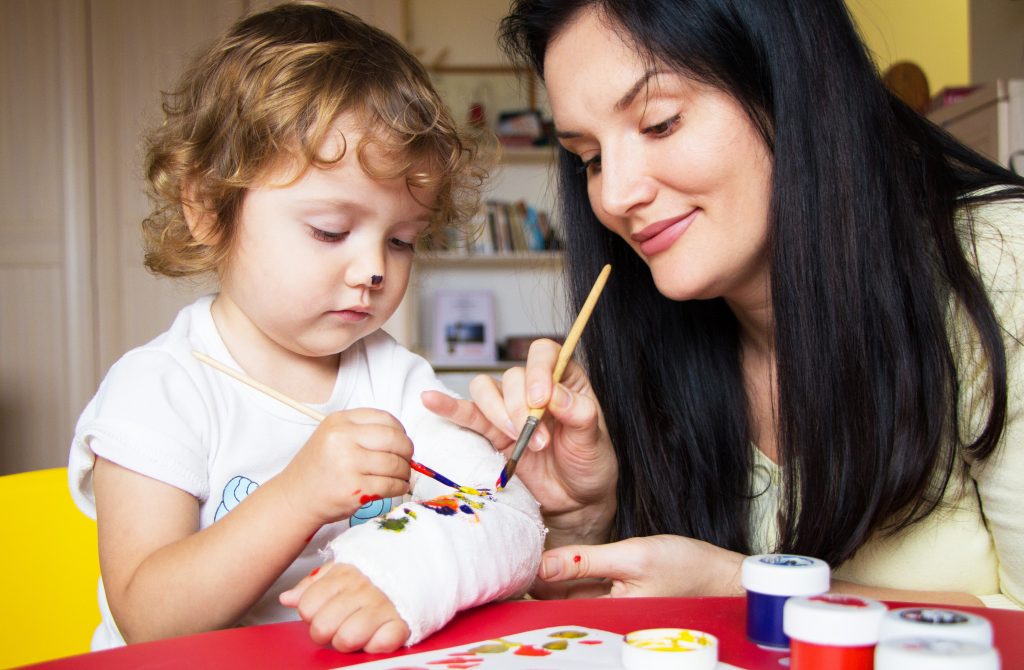Young children do not always have an inherent understanding of the consequences of their behavior and actions. They are naturally inquisitive and curious about the world, making them prone to injuries as they try to discover and learn more about their environment. One of the most common musculoskeletal injuries seen in children is a fractured bone.
A fracture is a break in the bone caused by an outside force that exceeds the bone’s threshold. Keep in mind that the anatomy of a child is different to an adult’s. A child’s bone has growth plates near the ends, which are made up of cartilage that expands and elongates as a child grows. Once physical growth has stopped, these growth plates harden and turn into a solid bone.
The bones of the forearm are the most common sites of fractures in children and a fall onto an outstretched hand is the most common mechanism that usually leads to this injury. The forearm is composed of two long bones that are positioned parallel to each other. The inner bone is called the ulna (pinky finger side) while the outer bone is called the radius (thumb side).
Types of Forearm Fractures Commonly Seen in Children
- Torus fracture. A torus (or buckle) fracture is an incomplete fracture in which one side of the bone is compressed while the opposite side is bent.
- Metaphyseal fracture. It is caused by the accumulation of multiple microfractures in the metaphysis, a narrow portion of a long bone that connects the shaft and the head, due to perpendicular shaking. This type of fracture is commonly seen in children 2 years old and younger because they have smaller bones and cannot protect themselves.
- Greenstick fracture. In a greenstick fracture, the bone cracks but does not break completely. It is common in children because they have softer and flexible bones, which have more tendency to bend and crack than to break all the way through.
Signs and Symptoms of a Forearm Fracture
In checking for signs and symptoms of a forearm fracture, it’s best to compare the injured forearm with the good forearm:
- Forearm pain. The younger the child, the harder it is for him to communicate his discomfort. If a child is crying while protecting, guarding, or cradling his or her forearm, take it as a sign that he or she is injured.
- Obvious forearm deformity. The forearm looks crooked or bent at an angle. Compare it with the other forearm.
- Swelling and discoloration.
- Numbness of the hand. If there is a nerve damage, there might be some loss of sensation and limitation of movement in the hand.
- Inability to move or rotate the forearm.
How to Manage a Forearm Fracture at Home
If you suspect a fracture, you should perform appropriate first aid treatments to prevent the injury from getting worse.
- Protect and rest the injured forearm to prevent further damage. Minimize forearm movement.
- Apply an ice pack to the injured area to numb the pain and minimize the swelling. If you don’t have an ice pack available, you can use a bag of frozen vegetable or peas wrapped in a towel. Apply for no longer than 15 minutes.
- Immobilize the injury to prevent further displacement. Splint the affected forearm using a piece of wood or a sturdy paperboard. Secure it in place using an elastic bandage or a tape, like Athletic Tape.
- Elevate the affected forearm above the level of the heart and against gravity to help prevent further inflammation.
Treatment of Forearm Fractures
After applying first aid, immediately bring your child to the nearest emergency room. The doctor will have to perform radiologic imaging studies to specifically identify the nature and extent of the injury. Your child will also have to wear an arm sling to secure the injured forearm.
Depending on the severity, the doctor can:
- Prescribe medicines to manage the pain and the inflammation.
- Immobilize the injured forearm using a cast. This will keep the bone in place while it heals.
- Apply traction to gently stretch the soft tissues surrounding the bone such as muscles and tendons. This is used when there is a need to realign the fractured bone.
- Recommend surgery to put the pieces of a broken bone back together through the use of pins and metal rods.
A fracture can be a traumatic experience for your child. As a mom, you need to provide him with encouragement and support as he braves the road to recovery.
I’m a 20-something stay-at-home mother and wife. I have an amazing husband, a beautiful daughter, two loving dogs, and a lazy cat. I wouldn’t change my life for anything! I love to read, listen to music, cook and blog!


Speak Your Mind